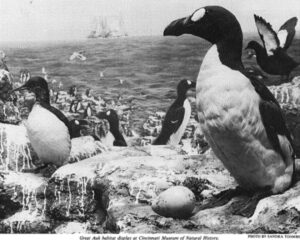For generations, Australian scientists thought their country’s ancient coasts were mostly barren of human activity.
New evidence might force a revaluation.
A sunken land mass bigger than the United Kingdom — 1.6 times bigger, according to researchers — likely bridged primordial seas between Australia and Indonesia. This Aussie Atlantis was big enough to carry half a million souls and it could have provided a prolific migration route.
Part of the continent of Sahul
The research, published last week in the journal Quaternary Science Reviews, suggests a departure from consensus. People likely did traverse this ephemeral land mass at various stages between 70,000 and 9,000 years ago, the researchers argued.
The sunken area lies 100m below the Timor and Arafura Seas off northern Australia. It was part of a Pleistocene continent known as Sahul, which included modern-day Australia, parts of Indonesia, and Papua New Guinea.
Its topography, modeled with high-resolution bathymetric data, shows a landscape that could have been a haven for early humans.
The data suggests an inland sea next to a large freshwater lake. “These were encircled by deep gorges and escarpments that likely acted as important resource zones and refugia for human populations at that time,” the study said.

Sahul, including artifact areas and land masses likely now submerged. Image: Peter Hiscock via ScienceDirect
Sea levels fluctuated in several distinct waves throughout Sahul’s existence. Ice ages gripped the planet in cycles that lasted tens of thousands of years. When they did, sea levels dropped as seawater became sequestered as ice.
One significant ice age hit between 29,000 and 14,000 years ago. Low seas “would have meant that there was basically a contiguous archipelago environment to move from the Indonesian archipelago, across to Sahul, and then from that archipelago into the supercontinent itself,” lead study author Kasih Norman told LiveScience. She said a “staged migration” could have ensued between modern-day Indonesia and Australia.
Reclaimed by the ocean
Kimberley and Arnhem Land already host evidence of some of Australia’s earliest habitation and the new findings add to the intrigue. The new research interprets the entire area, including the sunken land bridge, as one cultural region. The team explores the possibility that specific forms of art, tools, weaponry, and language proliferated across it freely.
In terms of sea levels, what goes down must come up. As the last major ice age to expose the bridge concluded, the ocean reclaimed much of the continent.
Between 12,000 and 9,000 years ago, 100,000 square kilometers of land disappeared (a substantial 30km per year).
“People would have seen the landscape change in front of them and been pushed back ahead of that encroaching coastline quite rapidly,” Norman told LiveScience.






